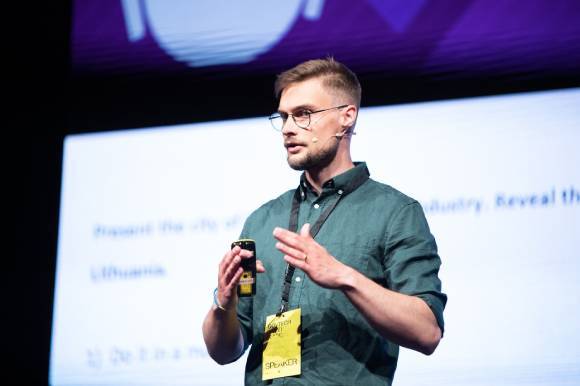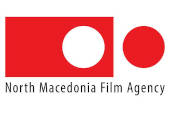Iron Cat is specialised in the development and commercialisation of creative IT solutions, solving challenges for the customers. They are constantly trying out solutions that can differentiate products and services in the market and represent companies at conferences and exhibitions.
Central and Eastern Europe is one of the most important locations for global games developers and studios, and artists in the region are increasingly working for both film and games. FNE looks at how these two sectors of the entertainment industry are converging and why this trend is important for the future development of both.
FNE: When was Iron Cat founded and what have been your main missions and strategic projects so far?
Paulius Juočeris: Our boutique, cosy company called Iron Cat has been actively working for about six years. We work with interactive VR/AR projects for museums, tourism sector, educational sector and private entities. Before that, our company was producing audio-visual content (full feature, author films). The change is quite significant; we still produce story driven, usually educational content, only these days it’s interactive.
FNE: What is the current situation in the Lithuanian game industry and what distinguishes it from the industry of other countries?
Paulius Juočeris: It’s fast growing, dynamic and these are exciting times for games here in Lithuania. It's relatively small and new, so the community is tight and very supportive. There’s a lot of talent, both local and foreign, and for small countries and small markets it’s important to stick together to compete with the big studios. The industry is in rapid growth each year, and more and more new game studios appear.
FNE: Video games and films are fast approaching each other and colliding. How is that reflected in Lithuania, are there any initiatives being launched that bring these two sectors together?
Paulius Juočeris: Yes, it’s true. It’s relatively new, so this is a major challenge for classical funding bodies to adjust, because there are never enough funds for everyone. There are events that emphasise the use of interactive visual storytelling outdoors using gamified experience (all kind of sensors) and visuals (projections, led screens and so on), and they are very popular (e.g. Vilnius Light Festival). Private and public sectors (museums, tourism centers, schools) are also investing in this.
There are also some initiatives for creators here. The Lithuanian Film Centre funds the development and creation of mixed media projects, and the Lithuanian Council for Culture also funds mixed media projects. There are even rumors that the Lithuanian Culture Ministry together with the Lithuanian Innovation Agency will launch a very interesting initiative for ARTTECH, where artists will be encouraged to mix technology and art to create unique projects.
FNE: Do you have any experience using VFX in terms of games? What can you tell us about your experience, vision of game cinematics and important to mention, AR/VR content creation?
Paulius Juočeris: Well, so far, the only limits we have are technological, as not all the machines (computers) or VR glasses can handle what our creative minds would want to see and develop. Cinematics and creative visual storytelling are becoming more and more important, especially in virtual reality. That’s why usually in VR we say that we are creating experiences, not games. These experiences usually emphasise sound, cinematics, animations or VFX.
Also, sometimes they are mixed with third party devices to create wind (fans), smell (perfume emitter) or heat (Heater), which are programmed together with the experience. Visual storytelling is usually in the centre of our work, so we need to make the content engaging and to create a sensation, not just a fun game or interaction.
An example of one of our latest creations for Lithuanian Travel is an ethnography inspired experience - The Folklore Flight above Lithuania, which we created fully in 3D using photo scans.
FNE: What can you tell us about your animated story of the Gargždai City?
Paulius Juočeris: The Gargždai cinematic animation was an experimental animation using 3D motion graphics mixed with 2D illustrations and special effects. It was an interesting experience, because we needed to find a way to cheaply but effectively create a 10-minute animation with a limited budget and timeframe. So, we used a lot of different techniques and programmes to create this “2.5D” animation.
FNE: Which Lithuanian games would you single out from your portfolio that have had international success?
Paulius Juočeris: We mostly work locally and we don’t create games in classical terms. I would say our last production for Travel Lithuania (Folklore Flight above Lithuania) had the biggest international success because it was showcased at a Vilnius NATO Summit to international guests, where it gained a lot of attention and was well received. It even got an ovation from one of the delegations (I believe it was the delegation from the U.S.).
FNE: Are there any films, animations and TV series from Lithuania that are being turned into games or games that are being turned into films, animations or TV series?
Paulius Juočeris: There are separate experiences that are popular, for example Trail of Angels by Kristina Buožytė, a VR experience about Lithuanian famous painter and composer M.K. Čiurlionis. It's very successful, and there is also a film about the composer here.
I believe there are many more projects being developed or even already on the market, which are based on films or games. Bigger games or films now use VR for promotion and, the other way around, VR is using cinematics and animations to promote VR experiences.
FNE: How much is the turnover and how much is the percentage of expected growth in the region? Are there any companies working on both games and film, who are they and what are they doing?
Paulius Juočeris: Every year the growth of the game and film industry is rapid in Lithuania. We expect it to grow even further, especially now, when you can start mixing both to create virtual environments to shoot films or commercials. There are already studios that are doing motion capture, virtual productions, gamified, interactive stuff.
The interest in this area is growing rapidly also because of the need to create more visually stunning content. There are not that many companies in Lithuania that specialise in this, usually it’s a broader portfolio of SFX or games. Our company, however, is now focusing on this. I believe everyone is doing OK; the market is not big, however the need for good quality cinematic content is noticeable.
FNE: How do you see the development of the relationship between the film and games industries?
Paulius Juočeris: I believe the future is bright, there will be more and more collaborations between them. It's beneficial for both. There are more and more examples of technologies and programmes that are mainly used in the game industry and that are now used in films and viceversa (real time graphic engines, VFX programmes, motion capture, 3D scanning). The creation of virtual sets, virtual photorealistic props and so on.
There are even some experiments with films implementing interactivity to create a new experience for the audiences. It’s really thrilling to be a part of this and even think of new ways we can use the tech to make new exciting projects.





















